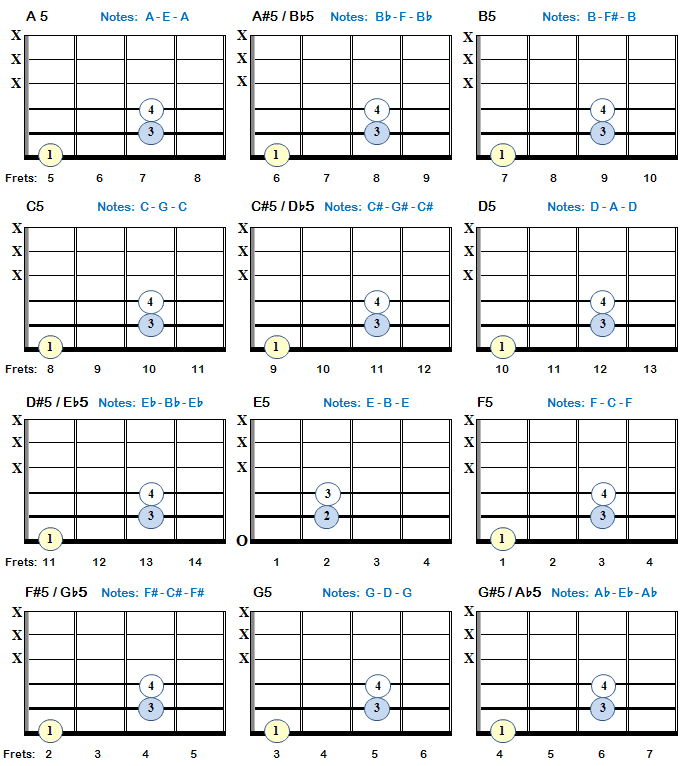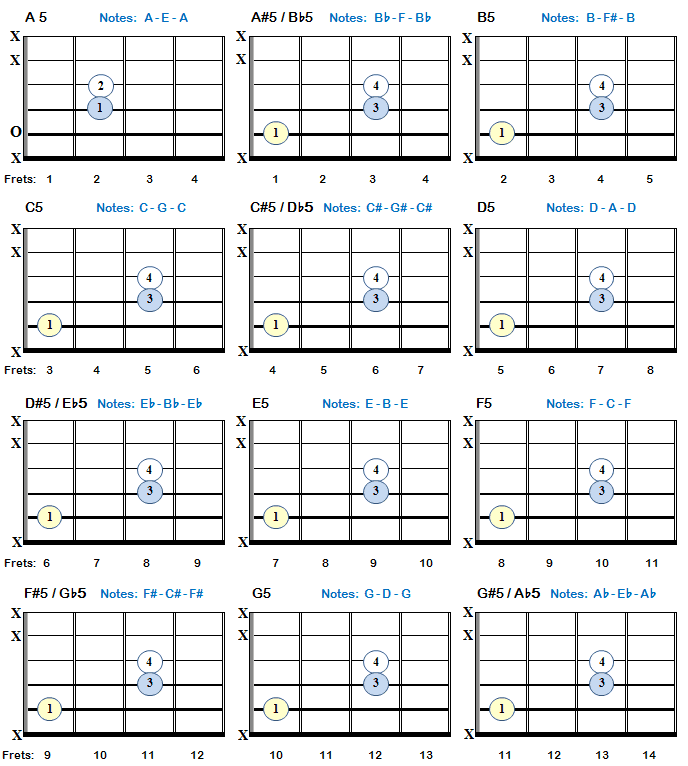
↓ Power Chords 1
If you want, you can use a mini barre on the 4th and 5th strings with your 3rd finger. This replaces having to use your 3rd and 4th finger. It's entirely up to you, but the more you play, the more you will tend to use the barre method. It's quick and efficient as you only need to worry about 1 finger placement instead of two.

↓ Power Chords 2
You can use a mini barre on the 3rd and 4th strings with your 3rd finger. This replaces having to use your 3rd and 4th finger. The choice is yours.
